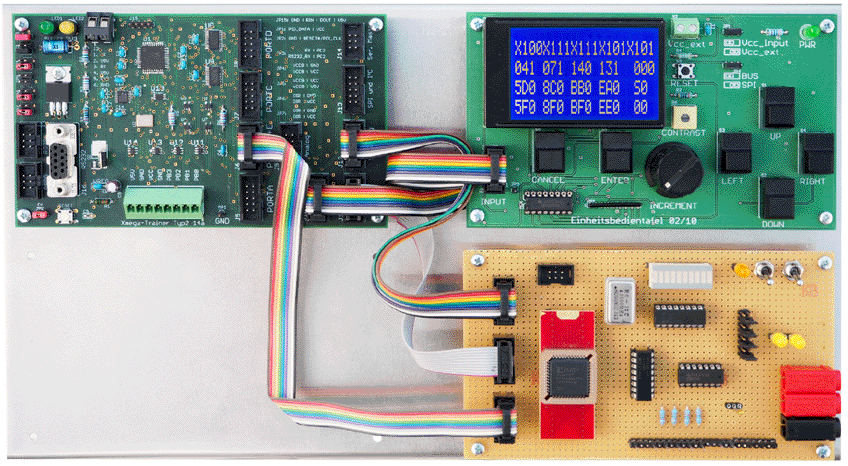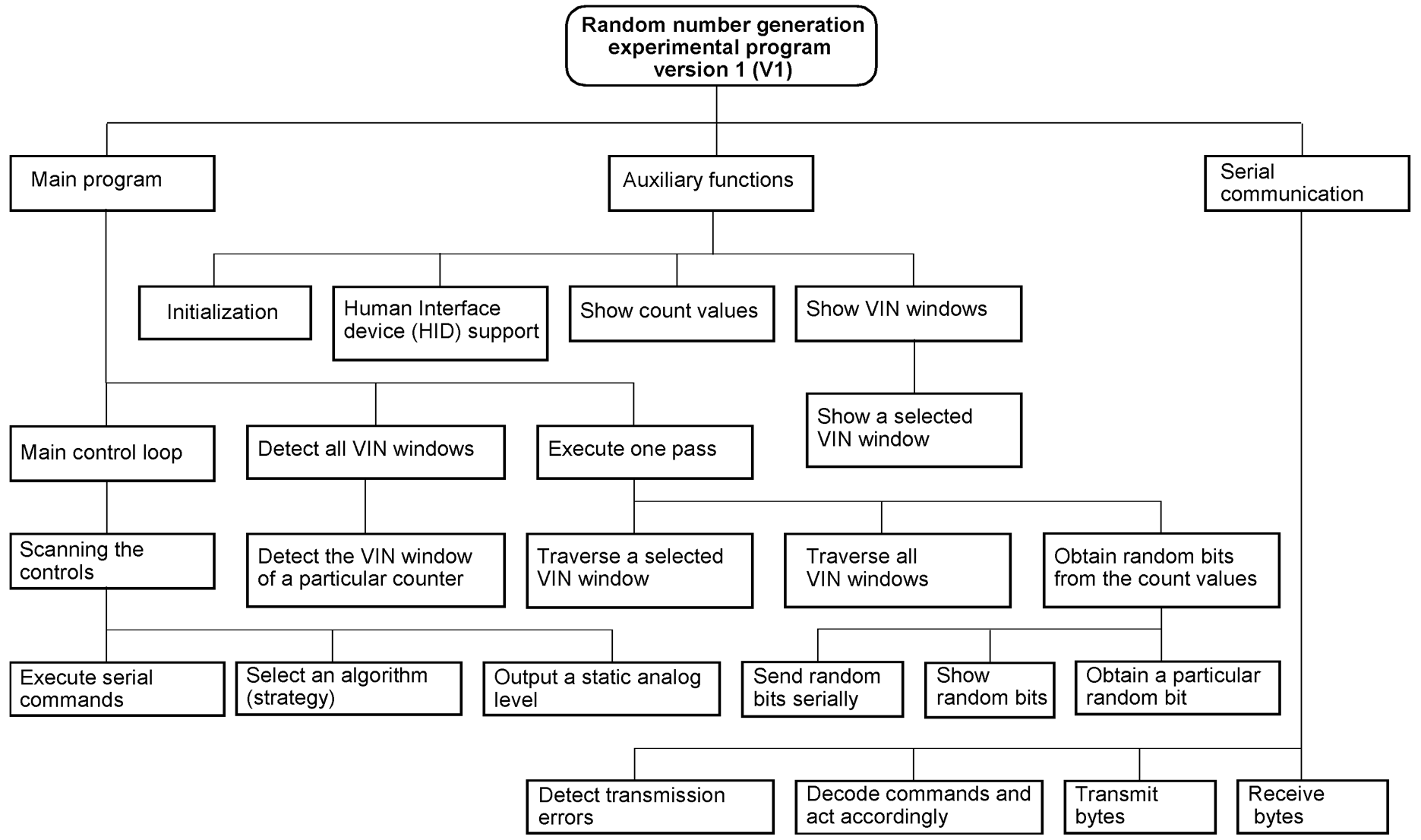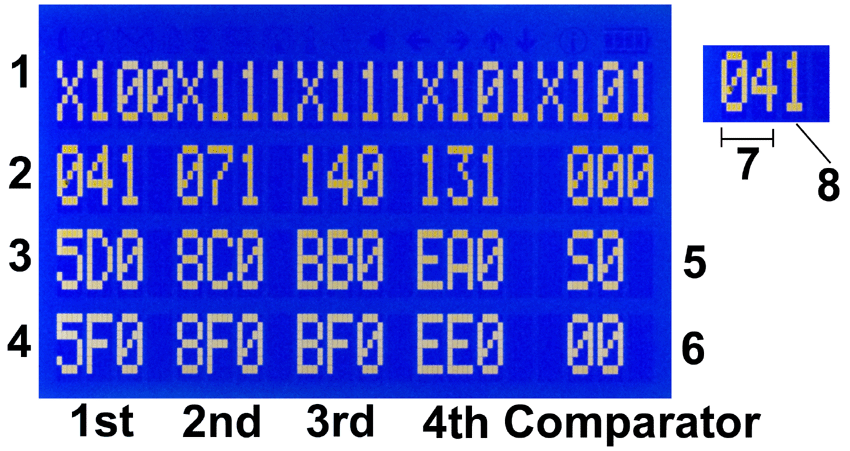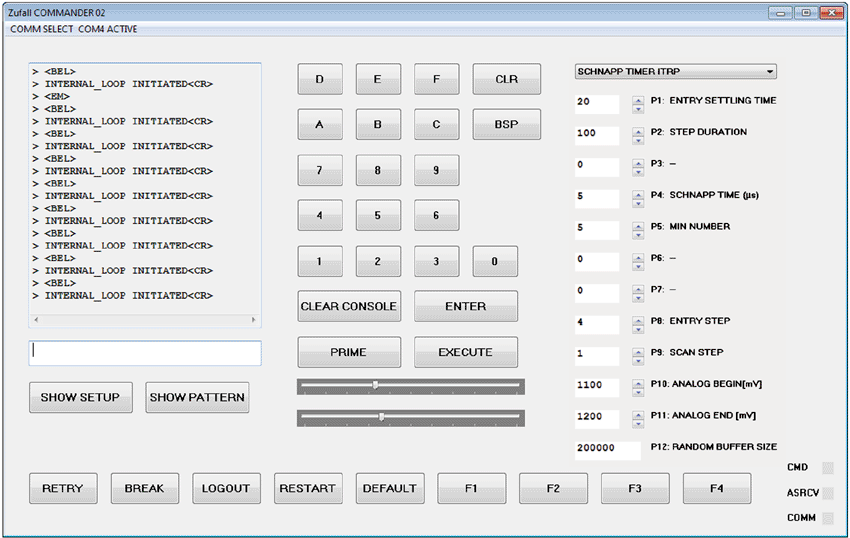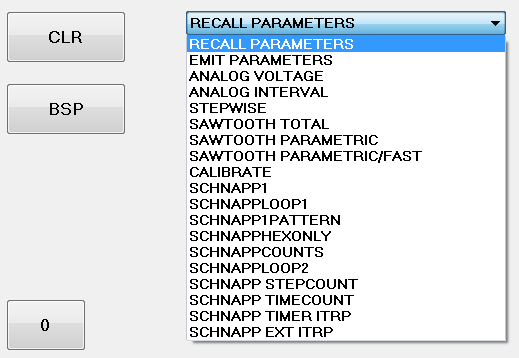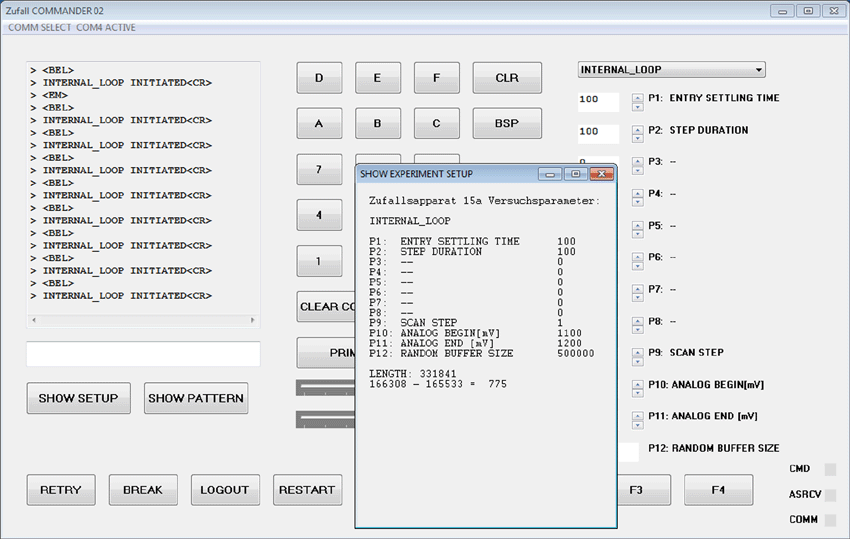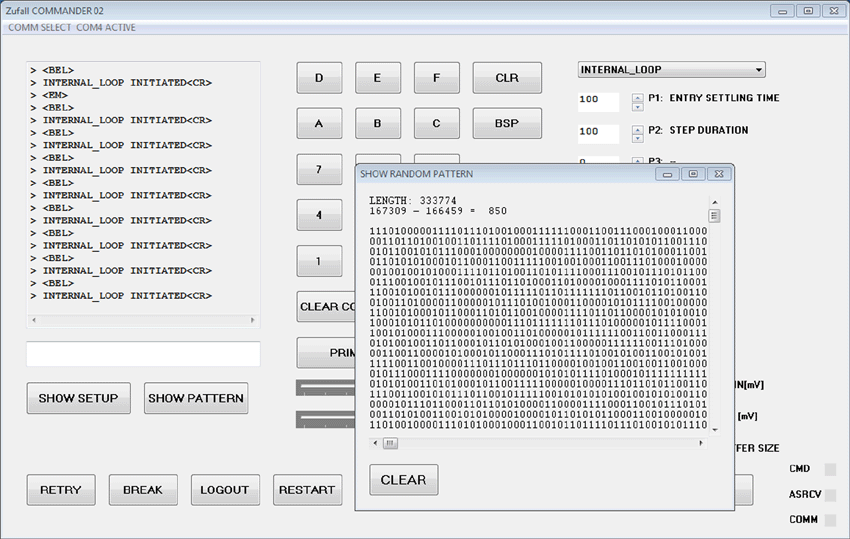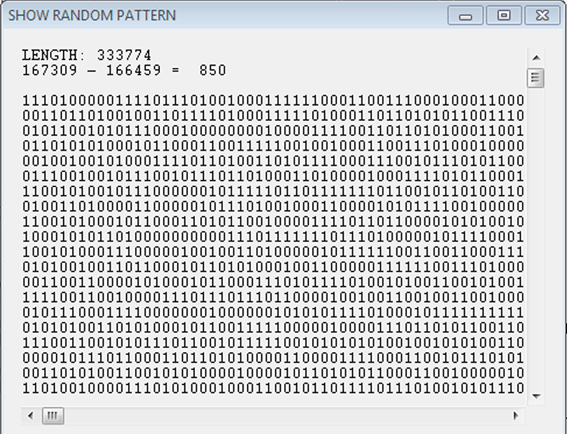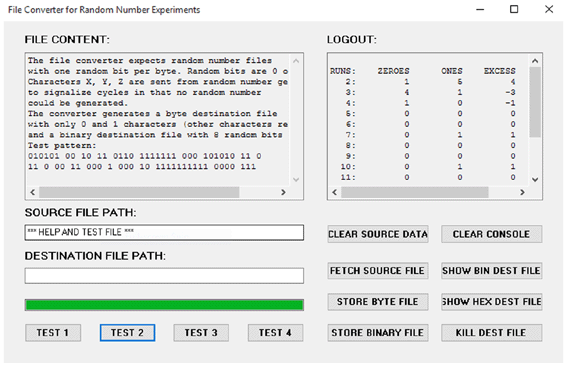|
|
|
True Random Number Generation Using Comparators
|
|
|
The software running in the platform's microcontroller. Here shown as a hierarchy diagram:
A typical display on the LCD screen. The numbers are in HEX. The platform has four comparators, each with its own reference voltage. 1 - the string of random bits. X designates an invalid result. 2 - the contents of the counters; 3 and 4 - the lower and the upper limit of the VIN window. Between those limits, the linear region is traversed and the random bit generated. 5 - the selected algorithm (strategy); 6 - the Aux counters (2 bits per comparator); 7 - the 8-bit counter; 8 - the accompanying Aux counter.
The menu of the first experimental program running on a personal computer. Communication is via a COM channel.
This is a part of the dropdown list allowing to select an experimental function or algorithm:
Before running the experiment, the set-up is displayed:
The experiment has been run. The resulting random bit string is displayed:
Here in more detail:
333 774 bits have been produced, among them 167 309 zeros and 166 459 ones. Six passes of the bit generation loop were not successful. The difference between zeros and ones yields a bias of 850 or 0,255%, thus promising an acceptable entropy. This program evaluates bit patterns and converts them to files. It has been written with deliberate neglect of comfort (e.g., no file handling dialogues).
The logout relates to the test pattern shown in the File Content window. It contains two runs 00, five runs 11, four runs 000, one run 111, and one run 0000.
|
|
|
|
|
